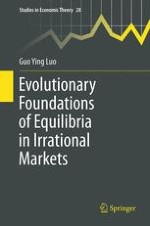2012 | OriginalPaper | Chapter
7. The Evolution of Money as a Medium of Exchange in a Primitive Economy
Author : Guo Ying Luo
Published in: Evolutionary Foundations of Equilibria in Irrational Markets
Publisher: Springer New York
Activate our intelligent search to find suitable subject content or patents.
Select sections of text to find matching patents with Artificial Intelligence. powered by
Select sections of text to find additional relevant content using AI-assisted search. powered by
